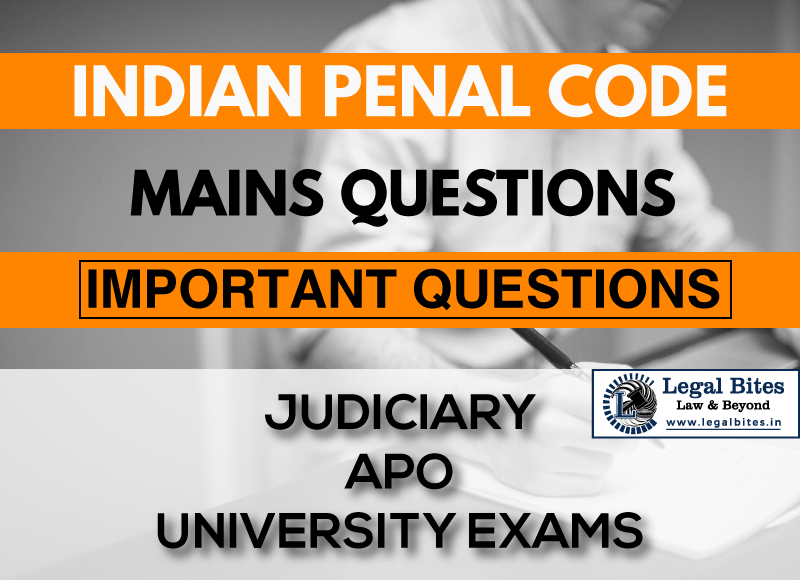What do you understand by solitary confinement? What are its provisions in the Indian Penal Code?
What do you understand by solitary confinement? What are its provisions in the Indian Penal Code?

Question: What do you understand by solitary confinement? What are its provisions in the Indian Penal Code? Find the answer to the mains question of IPC only on Legal Bites. [What do you understand by solitary confinement? What are its provisions in the Indian Penal Code?] Answer Solitary confinement is a form of imprisonment in which a prisoner is isolated from any human contact. It is an aggravated form of punishment. It is said that it fully exploits and destroys the sociable nature...
Question: What do you understand by solitary confinement? What are its provisions in the Indian Penal Code?
Find the answer to the mains question of IPC only on Legal Bites. [What do you understand by solitary confinement? What are its provisions in the Indian Penal Code?]
Answer
Solitary confinement is a form of imprisonment in which a prisoner is isolated from any human contact. It is an aggravated form of punishment. It is said that it fully exploits and destroys the sociable nature of men.
Section 73 of IPC deals with solitary confinement and states that whenever any person is convicted of an offence for which under this Code the Court has the power to sentence him to rigorous imprisonment, the Court may, by its sentence, order that the offender shall be kept in solitary confinement for any portion or portions of the imprisonment to which he is sentenced, not exceeding three months in the whole.
This should be according to the following scale:
- a time not exceeding one month if the term of imprisonment shall not exceed six months;
- a time not exceeding two months if the term of imprisonment shall exceed six months and shall not exceed one year;
- a time not exceeding three months if the term of imprisonment shall exceed one year.
The important elements of Section 73 are:
- Rigorous punishment
- Solitary confinement cannot exceed three months in the whole
Therefore, the maximum period of solitary confinement provided under this section is three months as is clear from the scale given in the section as well as the use of the expression ‘not exceeding three months in the whole’. The period of solitary confinement must follow the scale provided in this section.
In Sunil Batra Delhi Administration, AIR 1980 SC 1579 a petition was initiated by one of the prisoners under a death sentence. He through a letter alleged that the jail warden had pierced a baton into the anus of some other co-prisoner who is serving under life imprisonment in the same jail for a reason to extract money. Supreme Court held that no solitary confinement or any other type of hard labour shall be imposed without judicial appraisal of the sessions judge. This was a case where Sc had considered the validity of solitary confinement.
Further. In Charles Sobhraj Superintendent, Central Jail, AIR 1978 SC 1514, SC has held that any harsh isolation of a prisoner from the society of fellow prisoners by cellular detention under the Prisons Act, 1894 sections 29 and 30 is penal, and it must be inflicted only in accordance with the fair procedure; and in the absence of which the confinement would be violative of Article 21 of the constitution.
Important Mains/Long Questions for Judiciary, APO & University Exams
- IPC Mains Questions Series Part I: Important Questions
- IPC Mains Questions Series Part II: Important Questions
- IPC Mains Questions Series Part III: Important Questions
- IPC Mains Questions Series Part IV: Important Questions
- IPC Mains Questions Series Part V: Important Questions
- IPC Mains Questions Series Part VI: Important Questions
- IPC Mains Questions Series Part VII: Important Questions
- IPC Mains Questions Series Part VIII: Important Questions
- IPC Mains Questions Series Part IX: Important Questions
- IPC Mains Questions Series Part X: Important Questions
Admin Legal Bites
Legal Bites Study Materials correspond to what is taught in law schools and what is tested in competitive exams. It pledges to offer a competitive advantage, prepare for tests, and save a lot of money.

